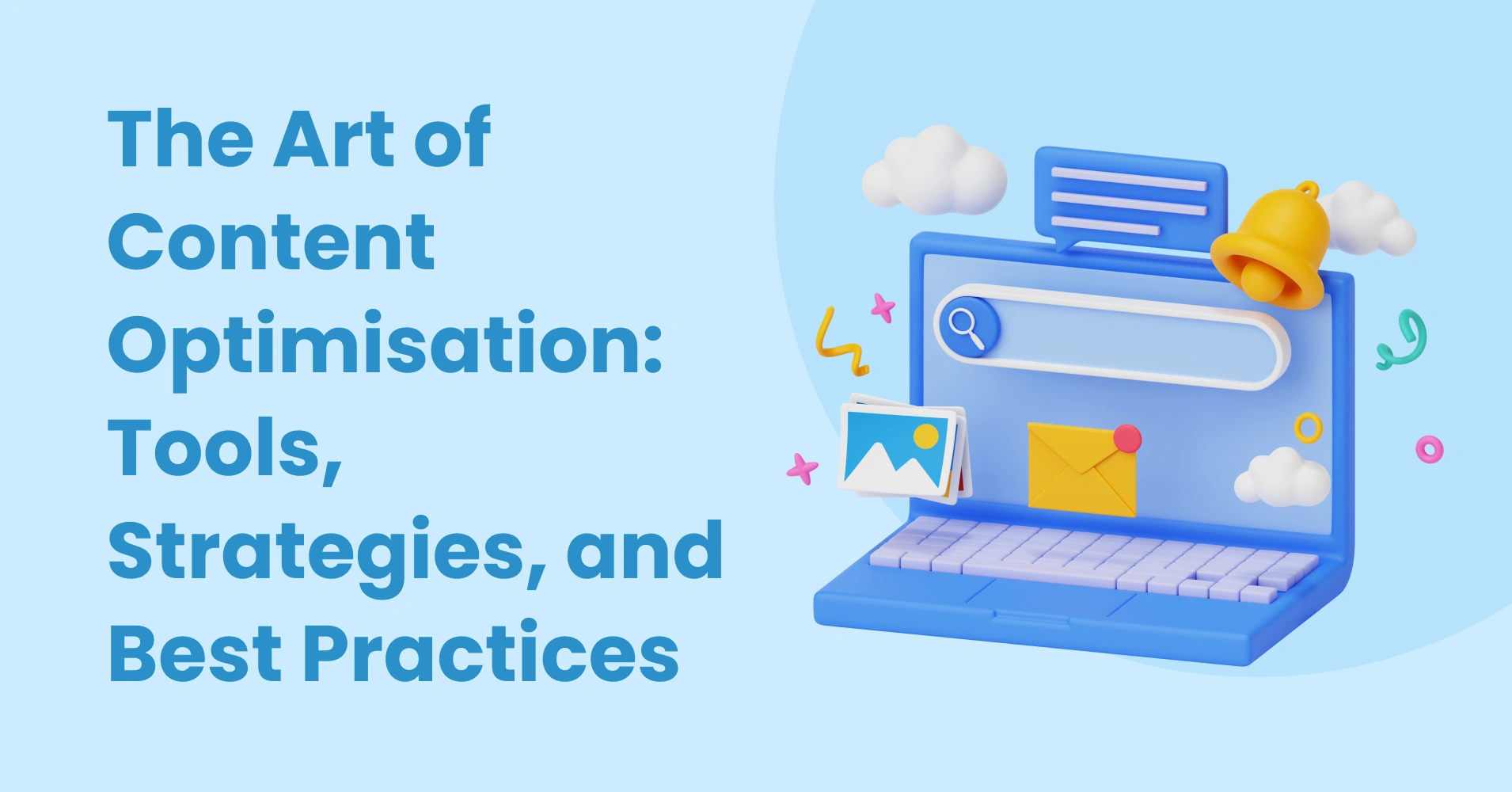In today’s digital era, where content reigns king, the art of content optimisation has become an essential skill for anyone wanting to thrive online. Whether you’re a blogger, a content marketer, or a business owner, understanding how to optimise your content can significantly impact your visibility, engagement, and ultimately, your success. While optimising content for search engines is essential, it’s equally crucial to remember that your content is ultimately created for human readers. Effective copywriting is at the heart of content optimisation, as it ensures that your content not only ranks well but also resonates with and engages your target audience. In this blog post, we’ll explore the tools, strategies, and best practices of content optimisation, emphasising its importance in today’s competitive landscape. And explore how to strike the right balance between SEO and human-centric content creation.
Content Optimisation: What is it?
Content optimisation is the process of fine-tuning your online content to make it more appealing, valuable, and accessible to both search engines and human readers. The ultimate goal is to improve your content’s visibility in search engine results pages (SERPs), attract more organic traffic, and engage your audience effectively.
Content Optimisation Tools
For effective content optimisation, you’ll need the right set of tools. Here are some essential ones:
- Keyword Research Tools : Tools like SEMrush help you identify relevant keywords that your target audience is searching for.
- Content Analysis Tools : Tools such as Yoast SEO provide insights and recommendations to improve the quality of your content.
- On-Page SEO Tools : These tools help optimise meta titles, descriptions, and headers. The Yoast SEO plugin for WordPress is a popular choice.
- Content Management Systems (CMS) : Platforms like WordPress offer built-in SEO features and plugins to streamline content optimisation.
- Analytics Tools : Google Analytics is invaluable for tracking the performance of your optimised content.
Content Optimisation Strategies
Now, let’s delve into some content optimisation strategies that can elevate your online presence:
-
In-Depth Keyword Research
Before creating any content, conduct thorough keyword research. Identify primary and secondary keywords related to your topic. Use tools like SEMrush to find relevant keywords with a high search volume and low competition.
-
High-Quality Content Creation
Create content that is informative, engaging, and valuable to your audience. Ensure it’s well-structured with clear headings, subheadings, and bullet points. Long-form content often performs well in search engines.
-
Optimise for On-Page SEO
Optimise your content for on-page SEO by incorporating your target keywords naturally into the content, meta titles, meta descriptions, and image alt text. Use header tags (H1, H2, H3) to organise your content.
-
Mobile Optimisation
It’s crucial to ensure your content is mobile-friendly. Use responsive design and test your content on various devices to guarantee a seamless user experience.
-
Improve Page Speed
Page speed is a ranking factor for search engines. Use tools like Google PageSpeed Insights to identify and fix issues that may slow down your website.
-
Internal Linking
Link to other relevant pages on your website to improve navigation and keep users engaged. This also helps search engines discover and index your content.
-
User Experience (UX)
Provide an excellent user experience by having a clean, user-friendly website design. Ensure that your content is easy to read and visually appealing.
Content Optimisation Tips
- Use descriptive and compelling meta titles and descriptions to entice users to click on your content in search results.
- Incorporate multimedia elements like images, videos, and infographics to enhance the visual appeal of your content.
- Regularly update and refresh old content to keep it relevant and maintain its search engine rankings.
- Encourage user engagement by responding to comments and questions on your content.
- Monitor your content’s performance using analytics tools and make adjustments as needed.
Striking the balance with human-centric content
It’s essential to strike the right balance between SEO and human-centric content creation.
Because ultimately your content is going to be seen by humans.
Here are some tips for ensuring your content is human-centric at heart:
-
Compelling Headlines and Openings
Your content’s first impression is crucial. Craft headlines and openings that intrigue, inform, and evoke emotions. Use persuasive language to promise value and address your audience’s needs.
-
Audience Understanding
Effective copywriting starts with a deep understanding of your audience. Tailor your content to their interests, speak their language, and demonstrate empathy for their challenges.
-
Compelling Storytelling
Incorporate storytelling into your content. Stories engage readers on a personal level, keeping them interested from start to finish.
-
Conversational Tone
Write in a conversational, approachable tone. Avoid jargon and technical language unless your audience consists of experts. Imagine you’re having a one-on-one conversation with your reader.
-
Clarity and Conciseness
Deliver valuable information clearly and concisely. Break down complex ideas, use short sentences and paragraphs, and eliminate unnecessary words to ensure readers grasp your content easily.
-
Engagement
Content creation doesn’t end at publishing. Engage with your audience through comments, social media, and email. Respond thoughtfully to questions and feedback to build a sense of community.
-
Calls to Action (CTAs)
Guide your readers on the next steps. Include clear and persuasive CTAs throughout your content, making it easy for your audience to take desired actions.
-
Testing and Iteration
Content optimisation through copywriting is an ongoing process. Experiment with different approaches, headlines, and styles. Use A/B testing to identify what resonates best with your audience and adjust your content accordingly.
In conclusion, content optimisation isn’t just about algorithms and rankings; it’s about connecting with your audience on a human level. Effective copywriting, combined with SEO best practices, allows you to strike that perfect balance, ensuring your content not only ranks high but also engages, informs, and delights your readers. By putting your audience at the centre of your content creation process, you can create content that not only performs well but also leaves a lasting impact.
Whilst this post touched on Copywriting, Copywriting is an art in itself so would be worthy of its own post to delve into more detail. And even then, a post would only scratch the surface.
If you would like an expert’s help with your Copywriting needs, reach out to our Nerds for help.





